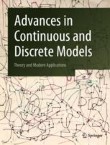2022 Citation Impact
4.1 - 2-year Impact Factor
2.9 - 5-year Impact Factor
1.702 - SNIP (Source Normalized Impact per Paper)
0.672 - SJR (SCImago Journal Rank)
2023 Speed
18 days submission to first editorial decision for all manuscripts (Median)
206 days submission to accept (Median)
2023 Usage
880,067 downloads
10 Altmetric mentions

 ...
...